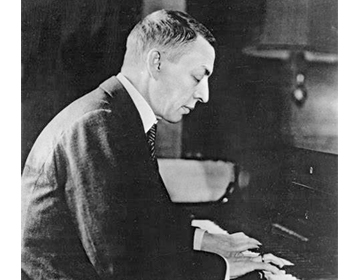In the summer of 1911, a year after he finished his 24 preludes, Rachmaninoff started on a new set of piano solo pieces, which he titled Études Tableaux, meaning ‘picture pieces’. This set of works is very different to the preludes, as they are intended to create ‘musical evocations of external visual stimuli’. However, Rachmaninoff himself didn’t give clear suggestions of the picture, but he wanted listeners to paint the picture themselves.
The only verbal clue about this etude in E flat major is the title he gave for Respighi to orchestrate the piece: ‘Scene at a Fair’. This is strongly echoed by the grandeur of the harmony in the piece. The tempo of the piece, at the same time, may as well suggest it as a triumphant march. The atmosphere is slowly built up from the simple major chord at the start, with varying dynamics, until the final outburst at bar 44. In the piece, we can also see numerous voices, again showing Rachmaninoff’s aptitude at using various voices. Moreover, some inner voices are quite interesting in their dialogues. Some tricks with the tempo also exists in this short etude. Yet with all this sophistication, the mood of the picture is simple in the music language, even though different people might paint different picture of ecstasy in their minds respectively.

